The Future Attack Reconnaissance Aircraft (FARA) program was initiated by the United States Army in 2018 to develop a successor to the Bell OH-58 Kiowa scout helicopter as part of the Future Vertical Lift program. Design contracts for FARA candidates were awarded in April 2019 to five manufacturers: Karem Aircraft, AVX Aircraft (in partnership with L3Harris Technologies), Sikorsky Aircraft (owned by Lockheed Martin), Bell Helicopter and Boeing. Two of the manufacturers will be selected to proceed with their designs in 2020, and prototypes are scheduled to first fly in 2023.
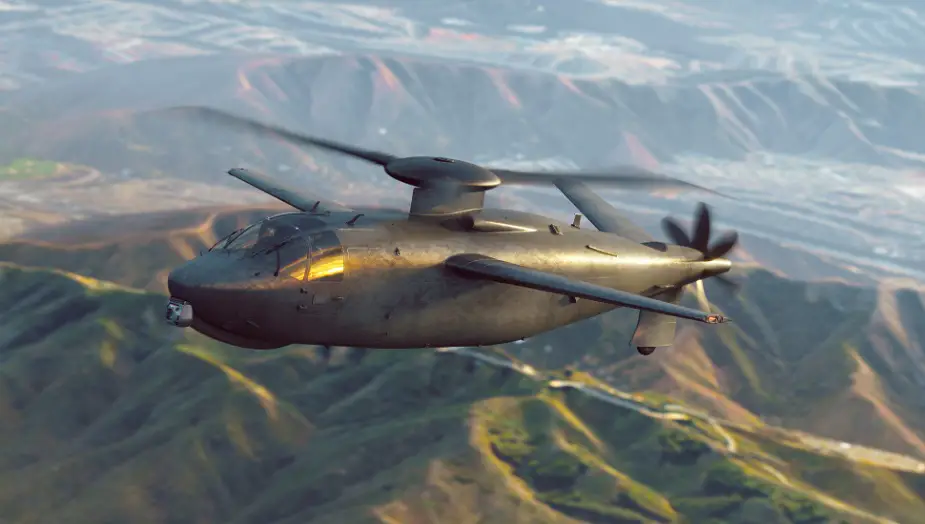 Karem AR40 rendering (Picture source: Karem Aircraft)
Karem AR40 rendering (Picture source: Karem Aircraft)
Karem Aircraft
Karem Aircraft unveiled its vision for the U.S. Army’s Future Attack Reconnaissance Aircraft (FARA) program: a rigid main rotor helicopter with a rotating wing and a rotating tail rotor, named AR40.
The AR40 aircraft has a 12.2m (40ft) wingspan – wider than the helicopter’s 11m main rotor diameter. The wing can provide the majority of the aircraft’s lift and tilts upwards during the helicopter’s descent or ascent in order to make its vertical flight more aerodynamic.
The AR40 also has a swiveling tail rotor, which in forward flight is angled backwards to be used as a pusher propeller. The company says in forward flight the aircraft’s vertical stabiliser compensates for torque from the main rotor blades. The swiveling tail rotor should allow for the aircraft “to manoeuvre aggressively at low speeds,” says Karem.
The design also has a three-blade main rotor that uses Karem’s Optimum Speed Rotor technology, which was initially developed using US Army research funds to create optimal efficiency for tiltrotors in vertical or horizontal flight.
On the AR40 helicopter, the system would be used to control each individual blade as it rotates, instead of forcing the blades to move in unison as is the case with a traditional swashplate system, says Thomas Berger, director of the FARA program at Karem.
“You're able to shape the trajectory of the blade path around the azimuth,” he says. “Being able to shape the trajectory gives you the possibility to get better performance, better acoustics, better reliability, automatic tracking.”
Karem believes the AR40 should be able to exceed the US Army’s 180kt (333km/h) maximum speed requirement by 40kt.
Northrop Grumman and Raytheon partnered with Karem Aircraft on the AR40. Karem is contributing its rotor and drive technologies, and is leading the design and prototyping process. Northrop is providing production and product support, as well as avionics expertise. Raytheon is the mission systems integrator and modular open systems architect.
The Future Attack Reconnaissance Aircraft (FARA) program was initiated by the United States Army in 2018 to develop a successor to the Bell OH-58 Kiowa scout helicopter as part of the Future Vertical Lift program.
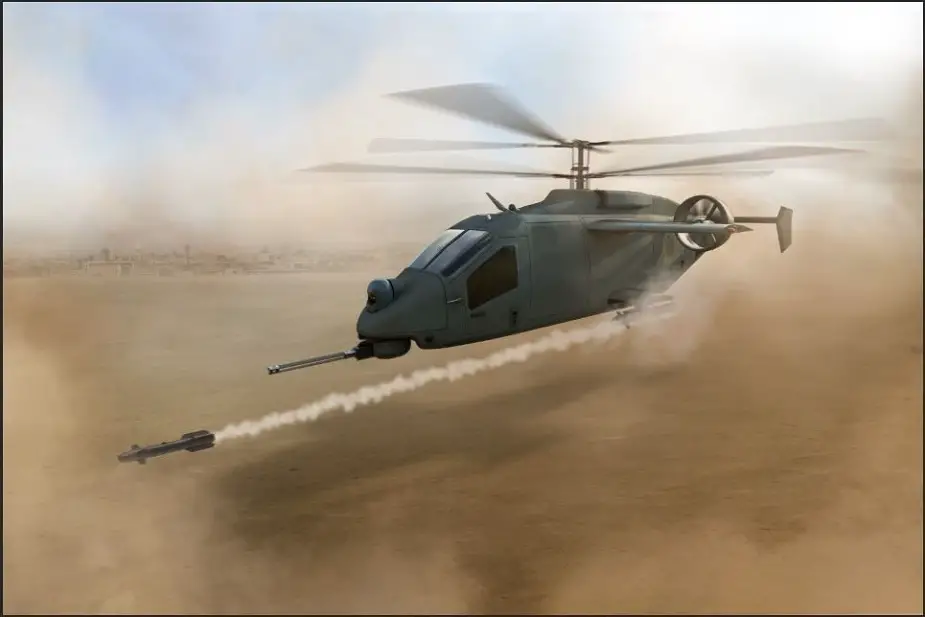 The AVX-L3 compound coaxial helicopter delivers innovation, performance and affordability for the U.S. Army’s Future Attack Reconnaissance Aircraft-Competitive Prototype program. (Picture Source: Business Wire)
The AVX-L3 compound coaxial helicopter delivers innovation, performance and affordability for the U.S. Army’s Future Attack Reconnaissance Aircraft-Competitive Prototype program. (Picture Source: Business Wire)
AVX Aircraft and L3 Technologies
The AVX Aircraft Company and L3 Technologies announced today their innovative compound coaxial helicopter (CCH) design, which is competing for Phase 1 of the U.S. Army Future Attack Reconnaissance Aircraft (FARA)-Competitive Prototype (CP) program competition.
The innovative design solution will exceed the reconnaissance and light-attack mission of FARA with a high-performing and survivable platform. AVX-L3 CCH will meet 100 percent of mandatory requirements and exceed 70 percent of them. The CCH design, combined with rigorous engineering and production processes and certifications, will deliver a safe, performance-driven, affordable aircraft capable of operating in highly contested airspace and degraded environments for extended periods.
“This FARA-CP solution provides L3 and AVX an opportunity to demonstrate the agility and innovation that sets our team apart in support of the U.S. Army’s modernization priorities,” said Christopher E. Kubasik, Chairman, Chief Executive Officer and President of L3 Technologies. “We are collaborating to deliver a prototype that provides powerful leap-ahead capability for our warfighters at an affordable life-cycle cost.”
“We are extremely pleased to reveal the design for this very important U.S. Army program,” said Troy Gaffey, AVX CEO and Chief Engineer. “AVX and L3 provide unique engineering design skills and manufacturing expertise that will provide the Army with an advanced, lethal and affordable reconnaissance and light-attack platform.”
The companies’ next-generation single-engine design, paired with a wing for lift during high-speed forward flight, provides leap-ahead capabilities in a faster, lighter and more lethal aircraft that requires less maintenance through its life cycle, featuring:
• A fly-by-wire, side-by-side cockpit optimized for pilot efficiency
• Two ducted fans that provide forward and reverse thrust for both high-speed operation and agility
• Modern open systems architecture (MOSA)-based digital backbone and avionics systems
• A small form factor that meets C-17 loading and Navy DDG shipboard size limits through manually folding blades and wings
• Modularity that provides for component reuse and a high degree of systems commonality across all of the U.S. Army capability sets
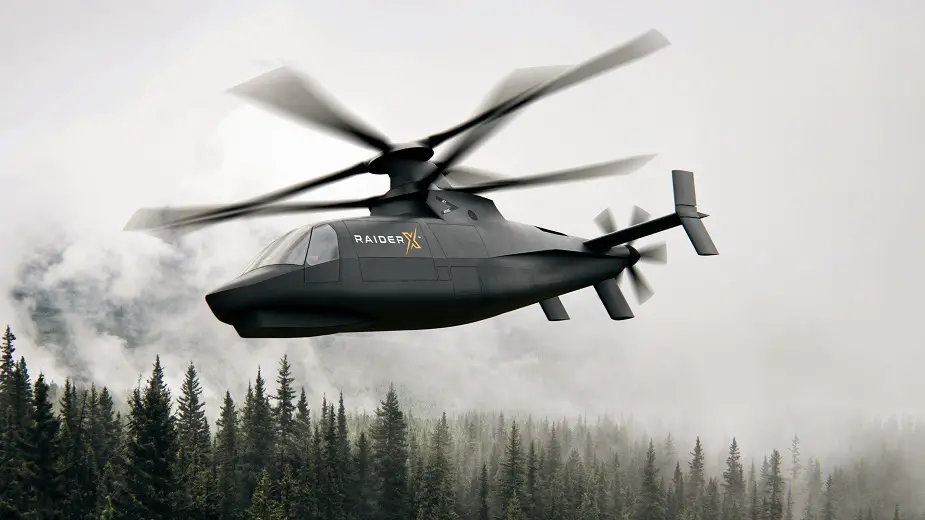 Sikorsky introduced RAIDER X as its entry to the US Army’s Future Attack Reconnaissance Aircraft (FARA) prototype competition (Picture source: Sikorsky)
Sikorsky introduced RAIDER X as its entry to the US Army’s Future Attack Reconnaissance Aircraft (FARA) prototype competition (Picture source: Sikorsky)
Sikorsky
Sikorsky, a Lockheed Martin company introduced RAIDER X, its concept for an agile, lethal and survivable compound coaxial helicopter, specifically designed for securing vertical lift dominance against evolving peer and near-peer threats on the future battlefield. Through the U.S. Army's Future Attack Reconnaissance Aircraft (FARA) program, RAIDER X is the out-front platform in the Service's revolutionary approach for rapid development and delivery of game changing technology and warfighter capabilities, equipped for the most demanding and contested environments. RAIDER X enables the reach, protection and lethality required to remain victorious in future conflicts.
"RAIDER X converges everything we've learned in years of developing, testing and refining X2 Technology and delivers warfighters a dominant, survivable and intelligent system that will excel in tomorrow's battlespace where aviation overmatch is critical," said Frank St. John, executive vice president of Lockheed Martin Rotary and Mission Systems. "The X2 Technology family of aircraft is a low-risk solution and is scalable based on our customers' requirements."
RAIDER X draws on Lockheed Martin's broad expertise in developing innovative systems using the latest digital design and manufacturing techniques. Sikorsky's RAIDER X prototype offers:
- - Exceptional Performance: The X2 rigid rotor provides increased performance including; highly responsive maneuverability, enhanced low-speed hover, off-axis hover, and level acceleration and braking. These attributes make us unbeatable at the X.
- - Agile, Digital Design: State-of-the-art digital design and manufacturing is already in use on other Lockheed Martin and Sikorsky production programs such as CH-53K, CH-148 and F-35, and will enable the Army to not only lower the acquisition cost, but enable rapid, affordable upgrades to stay ahead of the evolving threat.
- - Adaptability: Modern open systems architecture (MOSA)-based avionics and mission systems, offering "plug-and-play" options for computing, sensors, survivability and weapons, benefiting lethality and survivability, operational mission tailoring and competitive acquisitions.
- - Sustainable/Maintenance: Designed to decrease aircraft operating costs by utilizing new technologies to shift from routine maintenance and inspections to self-monitoring and condition-based maintenance, which will increase aircraft availability, reduce sustainment footprint forward and enable flexible maintenance operating periods.
- - Growth/Mission Flexibility: Focused on the future and ever evolving threat capabilities, X2 compound coaxial technology provides unmatched potential and growth margin for increased speed, combat radius and payload. This potential and growth margin further enables operational mission flexibility which includes a broader range of aircraft configurations and loadouts to accommodate specific mission requirements.
The nationwide supply team that Sikorsky has comprised to build RAIDER X will join company leaders today to introduce RAIDER X during the annual conference of the Association of the United States Army in Washington, D.C.
"RAIDER X is the culmination of decades of development, and a testament to our innovation and passion for solving our customers' needs," said Sikorsky President Dan Schultz. "By leveraging the strength of the entire Lockheed Martin Corporation, we will deliver the only solution that gives the U.S. Army the superiority needed to meet its mission requirements."
Proven X2 Technology: Scalable, Sustainable, Affordable
With RAIDER X, Sikorsky introduces the latest design in its X2 family of aircraft. To date, X2 aircraft have achieved/demonstrated:
- - Speeds in excess of 250 knots
- - High altitude operations in excess of 9,000 feet
- - Low-speed and high-speed maneuver envelopes out to 60+ degrees angle of bank
- - ADS-33B (Aeronautical Design Standard) Level 1 handling qualities with multiple pilots
- - Flight controls optimization and vibration mitigation
"The power of X2 is game changing. It combines the best elements of low-speed helicopter performance with the cruise performance of an airplane," said Sikorsky experimental test pilot Bill Fell, a retired Army pilot who has flown nearly every RAIDER test flight. "Every flight we take in our S-97 RAIDER today reduces risk and optimizes our FARA prototype, RAIDER X."
The development of X2 Technology and the RAIDER program has been funded entirely by significant investments by Sikorsky, Lockheed Martin and industry partners.
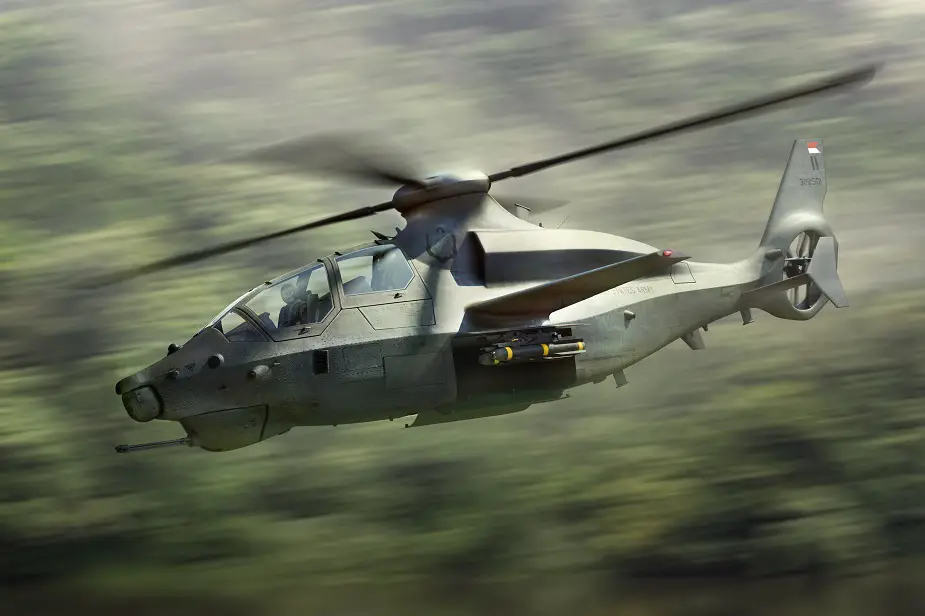 Bell 360 Invictus (Picture source: Bell)
Bell 360 Invictus (Picture source: Bell)
Bell Textron
Bell Textron Inc., a Textron Inc. company, has announced a new rotorcraft, Bell 360 Invictus, as the company’s entrant for the U.S. Army’s Future Attack Reconnaissance Aircraft (FARA) Competitive Prototype program.
Bell’s innovative approach to designing the Bell 360 Invictus combines proven low-risk technologies with advanced processes to deliver soldiers an affordable, agile and lethal solution to win on the modern battlefield. The Bell 360 Invictus meets or exceeds all requirements as laid out under the FARA contract.
“The Bell 360 will deliver advanced battlefield situational awareness, as well as lethal options, in support of the maneuver force at an affordable cost” said Vince Tobin, executive vice president of Military Business at Bell. “The multi-domain fight will be complex, and our team is delivering a highly capable, low-risk solution to confidently meet operational requirements with a sustainable fleet.”
The Bell 360 Invictus’ design emphasizes exceptional performance using proven technologies to fulfill the Army’s FARA requirements at an affordable cost and on schedule. One example is the Invictus’ rotor system. This design is based on Bell’s 525 Relentless rotor system which has been tested and proven at speeds in excess of 200 Knots True Air Speed (KTAS). By incorporating proven designs and the best available technologies from commercial and military programs, Bell delivers a low-risk path to a FARA program of record.
This advanced aircraft will have a transformative impact through next-generation flight performance, increased safety and greater operational readiness—all to deliver decisive capabilities.
Some of the key 360 Invictus features include:
- Lift-sharing wing to reduce rotor lift demand in forward flight, enabling high-speed maneuverability
- Supplemental Power Unit increases performance during high power demands
- Robust articulated main rotor with high flapping capability enabling high speed flight
- Fly-by-wire flight control system—synthesizes technologies, reduces pilot workload and provides a path to autonomous flight
- Speed: >185 KTAS
- Combat radius: 135nm with >90 minutes of time on station
- Achieves 4k/95F Hover Out of Ground Effect (HOGE)
- Armed with a 20 mm cannon, integrated munitions launcher with ability to integrate air-launched effects, and future weapons, as well as current inventory of munitions
- Provisioned for enhanced situational awareness and sensor technologies
- Modular Open Systems Approach (MOSA) enabled by a Digital Backbone from Collins Aerospace
- Robust design integrating lifecycle supportability processes early to ensure high OPTEMPO availability in multi-domain operations
- Design-as-built manufacturing model and digital thread enabled tools to enhance affordability, reliability, and training throughout the lifecycle of the aircraft
"Bell is committed to providing the U.S. Army with the most affordable, most sustainable, least complex, and lowest risk solution among the potential FARA configurations, while meeting all requirements," said Keith Flail, vice president of Advanced Vertical Lift Systems at Bell. “360 Invictus is an exciting opportunity for us to continue our support of Army modernization. This is the next solution to ensure soldiers have the best equipment available for the multi-domain fight.”
Bell has decades of experience providing attack and reconnaissance aircraft to the warfighter, such as the Kiowa Warrior which delivered high reliability and availability through more than 850,000 flight hours. The Bell 360 Invictus design builds from that legacy, Bell’s commercial innovations, and from the success in the development and manufacturing capabilities required for Future Vertical Lift (FVL) as part of the Joint Multi-Role Technology Demonstration (JMR TD) over the past six years.
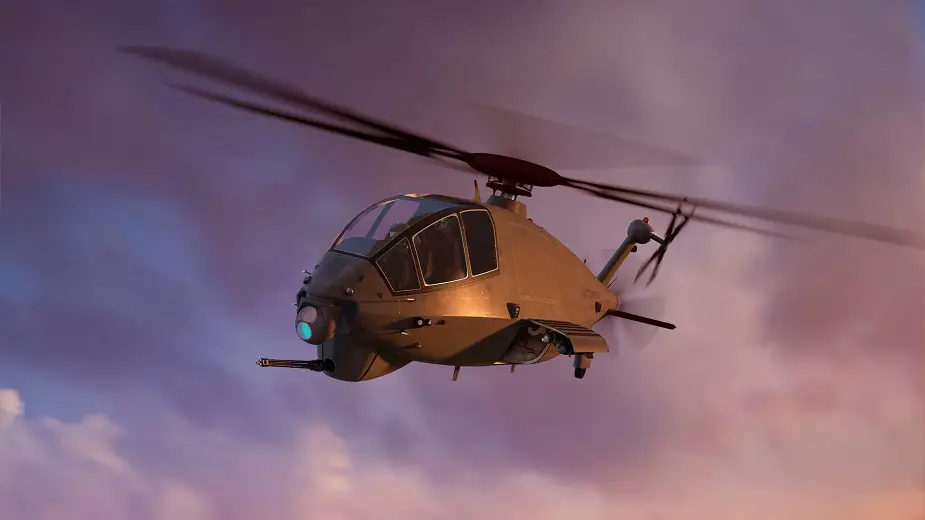 Boeing FARA (Picture source Boeing)
Boeing FARA (Picture source Boeing)
Boeing
American Company Boeing is offering the U.S. Army an agile, fully integrated, purpose-built system for the Future Attack Reconnaissance Aircraft (FARA) prototype competition.
Boeing FARA is designed to meet the Army’s current mission needs while evolving as technologies and missions change. The thrust compounded single-main rotor helicopter boasts a six-bladed rotor system, a single engine, tandem seating and a modular, state-of-the-art cockpit with a reconfigurable large area display and autonomous capabilities.
“We’re offering more than a helicopter – we’re offering an affordable and fully integrated system for the Army, the mission and the future. We’ve blended innovation, ingenuity and proven rotorcraft experience with extensive testing and advanced analysis to offer a very compelling solution,” said Mark Cherry, vice president and general manager of Boeing’s Phantom Works.
The fly-by-wire design leverages more than 65 years of rotorcraft experience, proven advanced and additive manufacturing technology, and product commonality driving down risk and costs. The system will provide seamless capability within the Army ecosystem to include Long-Range Precision Fires and air-launched effects.
“We listened to the Army, assessed all alternatives, and optimized our design to provide the right aircraft to meet the requirements,” said Shane Openshaw, Boeing FARA program manager. “We are offering a very reliable, sustainable and flexible aircraft with a focus on safety and the future fight.”
FARA will fill a critical gap in Army aviation for an advanced light attack and reconnaissance capability, previously held by the now-retired Bell OH-58D Kiowa Warrior.
















